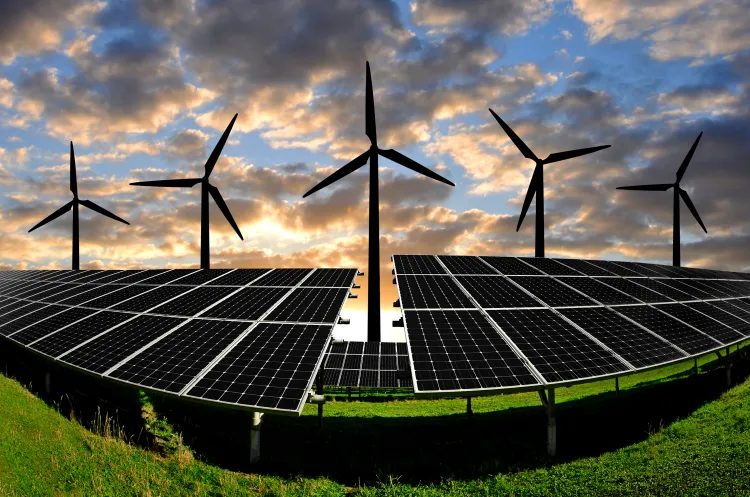Quick Summary:
AfDB Approves $184.1M for Obelisk Solar Project: The African Development Bank is financing Egypt’s 1GW Obelisk Solar Project with a $184.1 million package, including battery storage for improved grid stability.
Strategic National Project: The project, located in Qena Governorate, is part of Egypt’s Nexus of Water, Food, and Energy (NWFE) platform and has been granted a Golden License, highlighting its national importance.
Major Clean Energy Impact: Scheduled for completion in Q3 2026, the project will deliver 2,772 GWh of clean electricity annually, reduce CO₂ emissions by 1 million tons per year, and create over 4,000 jobs during construction.
Expanding Solar Footprint: The Obelisk project builds on Egypt’s strong renewable energy portfolio, which includes landmark initiatives like the Benban Solar Park and Kom Ombo Solar Plant.
The African Development Bank (AfDB) has approved a major financing package worth $184.1 million to support Egypt’s Obelisk 1-gigawatt (GW) solar photovoltaic (PV) project and a 200MWh battery energy storage system. This project strengthens Egypt’s ongoing commitment to renewable energy.
Although the Obelisk project is impressive, it follows the groundbreaking Benban Solar Park in Aswan, which remains Africa’s largest solar installation with a capacity between 1.5GW and 1.8GW.
Project Location and Key Details
The Obelisk Solar Project will be located in Qena Governorate, southern Egypt. The project covers the design, construction, and long-term operation of a solar PV plant with energy storage. It will run under a 25-year Power Purchase Agreement with the Egyptian Electricity Transmission Company.
Financing Structure
The total project cost is estimated at over $590 million. The financing package includes:
- AfDB’s ordinary capital: $125.5 million
- Sustainable Energy Fund for Africa (SEFA): $20 million
- Canada-AfDB Climate Fund: $18.6 million
- Clean Technology Fund: $20 million
Additional funding will come from other development finance institutions.
Strategic Importance of the Obelisk Project
The Obelisk project is part of Egypt’s Nexus of Water, Food, and Energy (NWFE) platform and has been granted a Golden License, recognizing it as a project of national strategic importance.
The project is expected to:
- Become operational by the third quarter of 2026
- Deliver around 2,772 GWh of clean electricity annually
- Reduce CO₂ emissions by 1 million tons per year
- Create over 4,000 jobs during construction
Supporting Egypt’s Renewable Energy Goals
Egypt’s Minister of International Cooperation, Dr. Rania Al-Mashat, highlighted the importance of the Obelisk project in advancing the NWFE energy targets. Egypt aims to:
- Add 10GW of renewable energy capacity by 2030
- Retire 5GW of fossil fuel power
The Obelisk project’s use of battery storage is a key feature, helping to improve grid stability and make solar energy more accessible during peak demand.
AfDB and International Support
Kevin Kariuki, AfDB Vice President for Power and Energy, emphasized that the project aligns with Egypt’s target to source 42% of its power from renewables by 2030.
The Canadian government, one of the co-financiers, also reaffirmed its support for Egypt’s energy transition. Ambassador Ulric Shannon noted that the Obelisk project will boost energy security, create economic opportunities, and showcase global collaboration on climate action.
Egypt’s Expanding Solar Energy Footprint
Egypt has consistently shown leadership in renewable energy, particularly solar power. Several large-scale solar projects across the country demonstrate this progress.
Benban Solar Park (Aswan)
Benban Solar Park remains a flagship project with a capacity between 1.5 GW and 1.8 GW. It spans 37 square kilometers and houses 41 solar power plants. Global investors like the International Finance Corporation (IFC) and the European Bank for Reconstruction and Development (EBRD) supported its development.
Kom Ombo Solar Plant (Aswan)
This project, led by ACWA Power, has a planned capacity of 200 MW and will power around 130,000 homes. It has received financial support from IFC and EBRD.
Zaafarana Renewable Energy Complex (Red Sea Coast)
A hybrid renewable energy complex, Zaafarana combines wind and solar technologies to support Egypt’s eastern corridor clean energy goals.
Gulf of Suez Hybrid Projects
The Gulf of Suez region hosts several renewable projects blending solar and wind energy. These initiatives align with Egypt’s Integrated Sustainable Energy Strategy (ISES) to achieve 42% renewable energy by 2030.
Infinity 50 Solar Plant (Benban)
Infinity 50 was the first large-scale solar plant completed in the Benban complex. Developed by Infinity Solar and German firm ib vogt, the plant has a capacity of 64 MW.
Conclusion
Egypt’s growing portfolio of solar energy projects highlights its role as a renewable energy leader in Africa and the Middle East. With initiatives like the Obelisk Solar Project, Egypt is pushing forward its energy transition and strengthening its position as a key player in the clean energy landscape.



















Leave a Reply